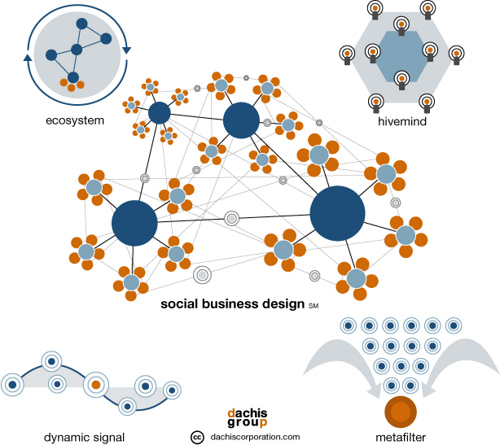Heute abend steht das Communardo Trendforum auf dem Programm, sehr reizvoll, ja, auch wenn ich im Moment unsicher bin ob ich es da hinschaffe bzw. guten Gewissens hingehen darf (ich habe mir eine extrem unangenehme Mittelohrentzündung von der Lotusphere mitgebracht und will niemanden anstecken …). Evtl. wäre es besser den Abend bei einem Kamillentee im virtuellen IBM Social Business Jam zu verbringen? Mal sehen, im Zweifel halte ich mich an Klaus Birks Motto “Wir können alles, außer was dafür!” und gehe doch hin, zumal man als Freiberufler eh niemals krank sein darf ist.
Ist Enterprise 2.0 ein ernstzunehmendes Thema oder nur eine neue Modeerscheinung? Zeigt die jüngste WikiLeaks Affäre das Versagen von Vernetzung und Transparenz auf? Steigern Social Intranets, Wikis, Blogs etc. tatsächlich die Produktivität? Welche Rolle spielen Compliance, Führungsfunktionen, Unternehmenskommunikation und Zusammenarbeit dabei? Muss jeder alles wissen?
Das Communardo Trendforum Stuttgart bietet für diese und weitere Fragen eine Diskussions- und Austauschplattform für Führungskräfte sowie verantwortliche Entscheider aus den Bereichen, Intranet, Unternehmenskommunikation, Organisationsentwicklung und Wissensmanagement zu aktuellen, wichtigen Themen rund um die Optimierung von Kommunikationsprozessen und Team Collaboration in Unternehmen.
Das Oberthema “Prozess-(R)evolution im Enterprise 2.0” ist natürlich spannend und offen genug gehalten um spannende Diskussionen anzustoßen – ich würde denn auch gleich den Titel anders formulieren und mit Prozess-(R)evolution durch Enterprise 2.0 antreten. Ganz im Sinne des Enterprise 2.0 als Vehikel und flankierende Maßnahme für die Umsetzung (ohnehin notwendigen) organisationalen Wandels. Ja, das habe ich auch schon mehrmals diskutiert, ua. hier “One word as a focal point for change – Collaboration“ und hier “Cultural change and developing collaboration capabilities“.
Wenn am Ende des Abends gehaltvolle Gespräche über die Zukunft der Idee Enterprise 2.0 entstehen (das von mir aus auch gerne unter dem mentalen Shortcut Social Business geführt werden darf, es geht ja mehr um die Idee als um Begrifflichkeiten, dann kann man auch eine Zeit mit verschiedenen Interpretationen leben) dann wäre ich zufrieden, es gibt ja auch genügend zu diskutieren, wie Joachim Niemeier sehe ich dort u.a.
[…] Themen wie Change Management im Kontext von Enterprise 2.0, neue Qualifikationsanforderungen zur praktischen Nutzung der neuen Arbeitsformen und die Einbindung von Enterprise 2.0 in eine längerfristige Organisationsentwicklung.
Gerade das letztere rührt an eine wunde Stelle und offene Flanke der Enterprise 2.0 Diskussion, die Frage nach der strategischen Einordnung, der Positionierung im unternehmerischen Kontext, der Frage wie Enterprise 2.0 bestehende Geschäftsmodelle und Modus Operandi von Unternehmen ändern muss und wird, wieviel sich Social Business Design vornehmen kann und soll etc. Insofern bleibt die Diskussion auch weiterhin spannend ….
